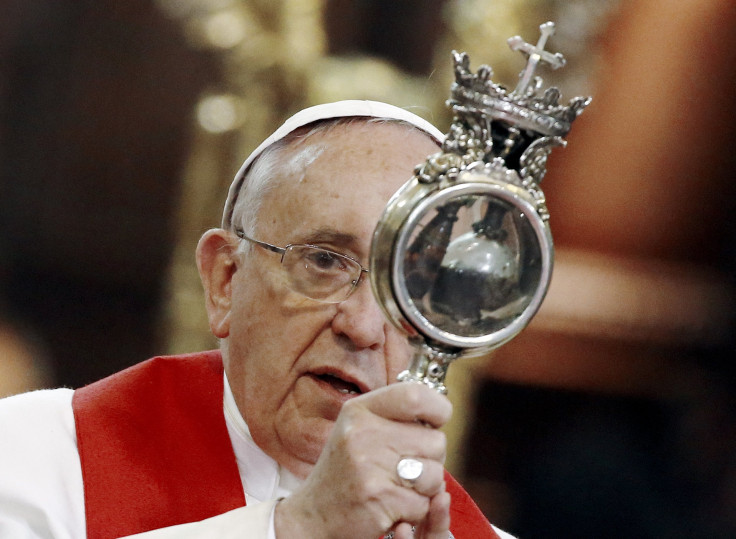The blood of San Januarius failed to liquefy in Italy and many are considering it an omen for 2017

Miracles are said to be few and far between, but the liquefaction of the bloof of Saint Januarius is repeated a handful of times in a year. However, the miracle did not occur over the weekend during a standard ceremony, and some have taken this event as an evil omen for 2017 -- though critics have a more scientific explanation.
READ: Nostradamus from the Balkans, Baba Vanga, predicted that Barack Obama would be the last US president
What is the liquefaction of blood and why is its failure considered an omen?
Several times a year for the past six centuries, the blood of Saint Januarius -- or San Gennaro as he is known in Italy -- becomes liquid in front of the public during special ceremonies. However, when it fails to liquefy, it is popularly seen as an omen. This is because, on the rare occasions that the miracle has not occurred, international disasters have occurred. One particular example is when the blood stayed solid in 1939, which is also the year that World War II began.
What does the Church say?
The Church acknowledges that a group of faithfuls have taken this event as an omen for the upcoming year, but Monsignor Vincenzo De Gregorio, the abbot of the Naples chapel, has simply requested prayers. "We must not think about disasters and calamities,” Business Insider quoted him saying. “We are men of faith, and we must continue to pray."
In 2015, Pope Francis kissed the vial of dried blood, which liquefied soon after the act. “It is the sign that Saint Gennaro loves Pope Francis,” Cardinal Crescenzio Sepe, archbishop of Naples told those in attendance. And while this statement was met with cheers from the crowd, critics have also offered their own explanations.
What do critics have to say?
As Huffington Post previously reported, there are several explanations from various skeptics. One of the more popular ones is that the blood simply liquefies due to changes in conditions. The change is said to occur when the vial and relic are moved from its storage area to the display.
READ: Nostradamus' prediction on Trump’s election & third global war
Who is Saint Januarius?
Saint Januarius was a Bishop in Naples, Italy, who died in the 4th century. He was beheaded in the persecution of early Christians, which was headed by Roman Emperor Diocletian, and was reason for the death of more than 3,500 Christians. His blood has since been kept in vials and has been brought out several times a year -- particularly on the first Sunday of May and on Sept. 19, which is his feast day.






